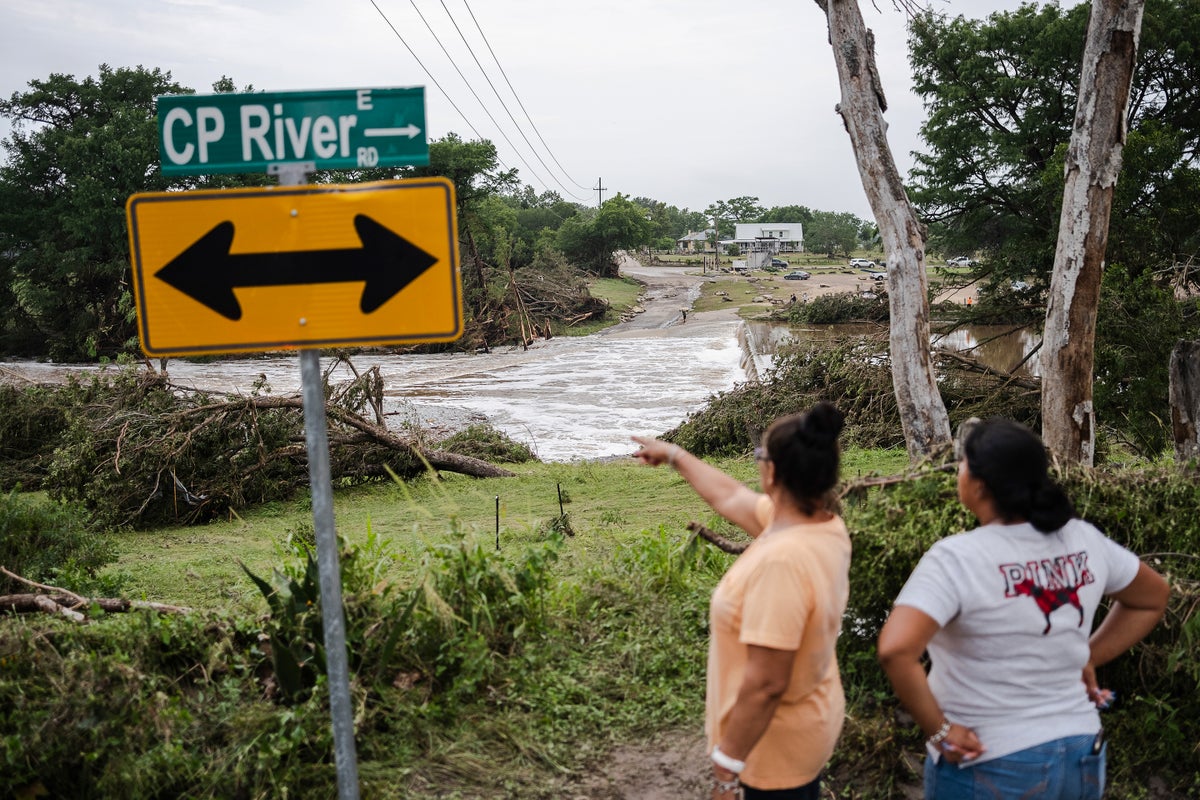Why Did Waters Rise So Quickly in the Texas Flash Floods?
Flash floods happen when heavy rains unleash more water than the ground can absorb, causing that water to pile up and flow to low-lying areas
Two women survey the damage caused by flash flooding on the bank Guadalupe River in Center Point, Tex., on July 5, 2025. Heavy rainfall caused flooding along the Guadalupe River in central Texas, with multiple fatalities reported.
Join Our Community of Science Lovers!
In the wee hours last Friday morning, the Guadalupe River in Texas Hill Country rose 26 feet in just 45 minutes in Hunt, Texas. Like all flash floods, this record-breaking water swell resulted from a large amount of rain that drenched one area over a relatively short amount of time. Flash floods are so named because waters can rise extremely quickly—within minutes to hours of when rains begin—catching people unaware, as happened in Texas on July 4. At least 90 people died in those floods as of Monday afternoon.*
The devastating event in Texas happened because of a convergence of ingredients. Flash floods can happen when a storm lingers over an area for a period of time and when a storm has extremely high rainfall rates. In the recent event in Texas, there was a small area along the south fork of the Guadalupe River where six to 10 inches of rain fell in just three hours—a stunning amount of precipitation.
And in intense rainfalls, the ground simply cannot absorb water as quickly as it comes down. This is particularly the case in urban areas, where paved surfaces are more impervious to water than soil, grass or other natural ground cover are. The ground is also less able to soak up water if it is already saturated from previous rains or if there has been an intense drought that has hardened soils.
If you’re enjoying this article, consider supporting our award-winning journalism by subscribing. By purchasing a subscription you are helping to ensure the future of impactful stories about the discoveries and ideas shaping our world today.
Because the ground cannot soak up the water, it piles up on the surface, starting in the lowest-lying areas. In the floods in Texas, all that water piled up in the Guadalupe’s riverbed because the river had very low water levels prior to the event. The storm that produced those high rains was also moving along the flow of the river, and storms that do so produce higher river levels than those that move against the flow, according to research that retired National Weather Service . River gauges show that, at one point of the Guadalupe, the river rose from 7.7 feet of water, with a flow of eight cubic feet per second, when the storm started just after 1 A.M. last Friday to more than 29 feet, with a flow of 120,000 cubic feet per second, by 4:30 A.M. on that day, Gerard wrote. The onslaught of water can mean a stream or river overtops its banks, flooding nearby areas.
Flash floods can be so damaging because water is incredibly powerful. Even six inches of quickly moving water can knock a person off their feet, and two feet of water can float a car. The faster the water is moving, the greater the force it exerts on a car, person or structure—that pressure increases proportionally to the square of the water’s velocity.
*Editor’s Note (7/7/25): This sentence was edited after posting to update the number of deaths.
Andrea Thompson is an associate editor covering the environment, energy and earth sciences. She has been covering these issues for 16 years. Prior to joining Scientific American, she was a senior writer covering climate science at Climate Central and a reporter and editor at Live Science, where she primarily covered earth science and the environment. She has moderated panels, including as part of the United Nations Sustainable Development Media Zone, and appeared in radio and television interviews on major networks. She holds a graduate degree in science, health and environmental reporting from New York University, as well as a B.S. and an M.S. in atmospheric chemistry from the Georgia Institute of Technology. Follow Thompson on Bluesky @andreatweather.bsky.social
Source: www.scientificamerican.com
